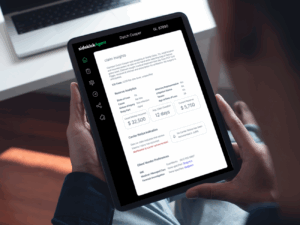September 10, 2024
For 30 years, the Family and Medical Leave Act (FMLA) — a federal law that provides eligible employees with job-protected leave for qualifying family and medical reasons — has been foundational in protecting the rights of American workers, and ensuring no worker should be forced to choose between the job they need and the family they love. FMLA has been utilized more than 100 million times to help workers balance work demands with health and family-related needs. In doing so, the act has protected 18,000 workers who were unjustly terminated and has led to the recovery of $63 million in back wages for affected workers.
FMLA compliance is important, as audits have become more frequent. In 2022, sparked by increased demand on the global supply chain system and the resulting strain on the warehouse and logistics industries, the U.S. Department of Labor (DOL) announced an initiative to use education and vigorous enforcement to increase compliance and reduce FMLA violations. Some employers assume that because of their size, location or market segment that they are immune from being audited. Complacency, though, can end in liability and financial hurt, particularly as DOL audits continue to increase in frequency. Employers can take several steps to ensure readiness in case an FMLA audit were to arise.
Review and pay attention
First, review and adhere to posting requirements. Covered employers must prominently display specific FMLA information — a summary of its major provisions (what FMLA leave is, employee rights, rules surrounding eligibility, and employer requirements) and how employees can file a complaint — at every location, even if no employees are currently eligible for FMLA leave. For remote working populations, employees must be able to easily access this information on the company’s intranet site.
It is critical employers also conduct a thorough review of their company’s FMLA policies, to evaluate whether the policies are still compliant with recent FMLA-based court rulings. For instance, what is an employer’s intermittent leave policy, and what is the call-off policy for it? Does the employee need to coordinate with a third party administrator? Are employees required to provide a return to work form from their doctor? How are benefits handled when an employee is on FMLA and does the policy stipulate whether employees on leave can earn income elsewhere?
All FMLA-related forms and correspondence also must be reviewed and maintain compliance. Correspondence is a critical aspect of FMLA, as it is the mechanism that employer’s use to document the process and often explain relevant decisions. It is important to provide the appropriate forms to employees, and to make sure the forms are completed and returned on time. Any custom forms not issued by the DOL should be carefully reviewed by attorneys; employers can face consequences if they ask questions they aren’t supposed to.
Train, train, train — and test
Although most workers likely will not notify the DOL if they are turned down for leave, employees who do not understand the rules may feel that they were treated unfairly. Education surrounding the organization’s FMLA policy and the process behind leave decisions is imperative not only for employees, but also for managers and company leadership. Audits often stem from a miscommunication at the managerial level. Formal trainings are ideal and more effective than a simple annual memo.
A policy or process is only beneficial if it is followed. Employers should conduct their own comprehensive audit of their FMLA policies, correspondence and forms — and ensure recordkeeping is neatly intact — to proactively prepare for a potential DOL audit. A test audit could include auditing all FMLA claims over the past 12 to 24 months to ensure policies are aligned, forms and correspondence are compliant, and processes are clearly stated and supported. It is best to uncover any deficiencies before the DOL has a chance to.
Learn more > Sedgwick’s experts track absence management updates, legislative developments and industry trends. Get the latest on our website.
This content was originally published by the Disability Management Employer Coalition (DMEC) as part of the Absence Matters column.



